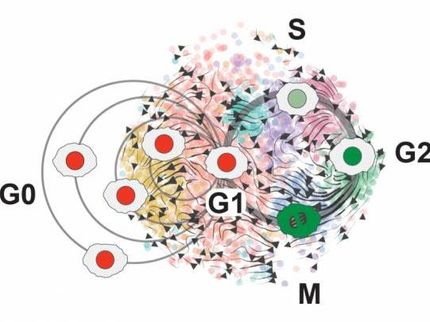Biomechanical cell properties highly relevant for cancer research
Advertisement
Biomechanical changes of cells are a prerequisite for tumor growth and invasion of cancer cells. These new research finding in the field of biophysics of cancer cells were published recently by the group of Prof. Dr. Josef A. Käs together with Prof. Dr. Dr. Michael Höckel (both University of Leipzig, Germany) in an invited article in Nature Physics. The publication is sponsored by the National Cancer Institute in Washington DC.
Based on material’s properties of (cancer) cells the physicist Prof. Dr. Josef A. Käs as well as the medical scientist Prof. Dr. Dr. Michael Höckel came to the following results which could give rise to considerably changes in cancer therapies: The research team found out that the biomechanical properties of tumor cells promote their growth as well as their invasion within the human body.
Three biomechanical properties are in the focus of these observations: First, the outer cytoskeleton, the so called actin cortex of cancer cells is much softer and supports fast growth and cell division. “We could evidence such behavior in a first clinical study, for example with Prof. Thorsten Remmerbach for oral cancer” claims the physicist. The second striking biomechanical property of cancer cells affects the tumor growth against the normal tissue surrounding the tumor: “Obviously, the cells do not have to stiffen linearly to grow against the environment. We can solve the apparent contradiction by considering that the soft actin cortex gets softer but nevertheless, it can resist high pressures exerted from the surroundings. In return, elements of the cytoskeleton are pronounced which results in an overall stiffening of the tumor.” The third biomechanical property considers the ability of metastasizing cancer cells to overcome boundaries between different tissues. “Normal cells usually favor to stay together,” Käs explains. Metastasizing cells can overcome the boundaries by very sensitive reaction on mechanical impulses and contraction. Thus, cancer cells quickly mix with other cells. Together with the ability of self-contraction these cancer cells can leave the primary tumor and metastasize.
The self-contraction is the central observation which is presented in “Nature” to the specialised public and researchers. From these and so far obtained scientific results new approached for diagnostic and therapy can be derived.
In reverse to the cell properties mentioned above, the researchers from Leipzig investigate agents which influence these properties to obtain new possibilities to suppress growth and invasion of tumor cells: “It is still a long way to go. However, we have new approaches for that,” Käs claims. His research is supported by the BMBF project AGESCREEN and EXPRIMAGE, as well as by the DFG Initiative of Excellence within the graduate school BuildMoNa.
The investigation of changes in physical, i.e. material, properties of cells during progression of cancer is an emerging field in physics redefining medical physics and now redefines itself based on material science. The University of Leipzig plays a leading role in this new field.
Meanwhile, the new findings were employed to apply for a patent with the title “Method for diagnosis and/or prognosis of cancer diseases by analysis of the mechanical properties of tumor cells.”

















































